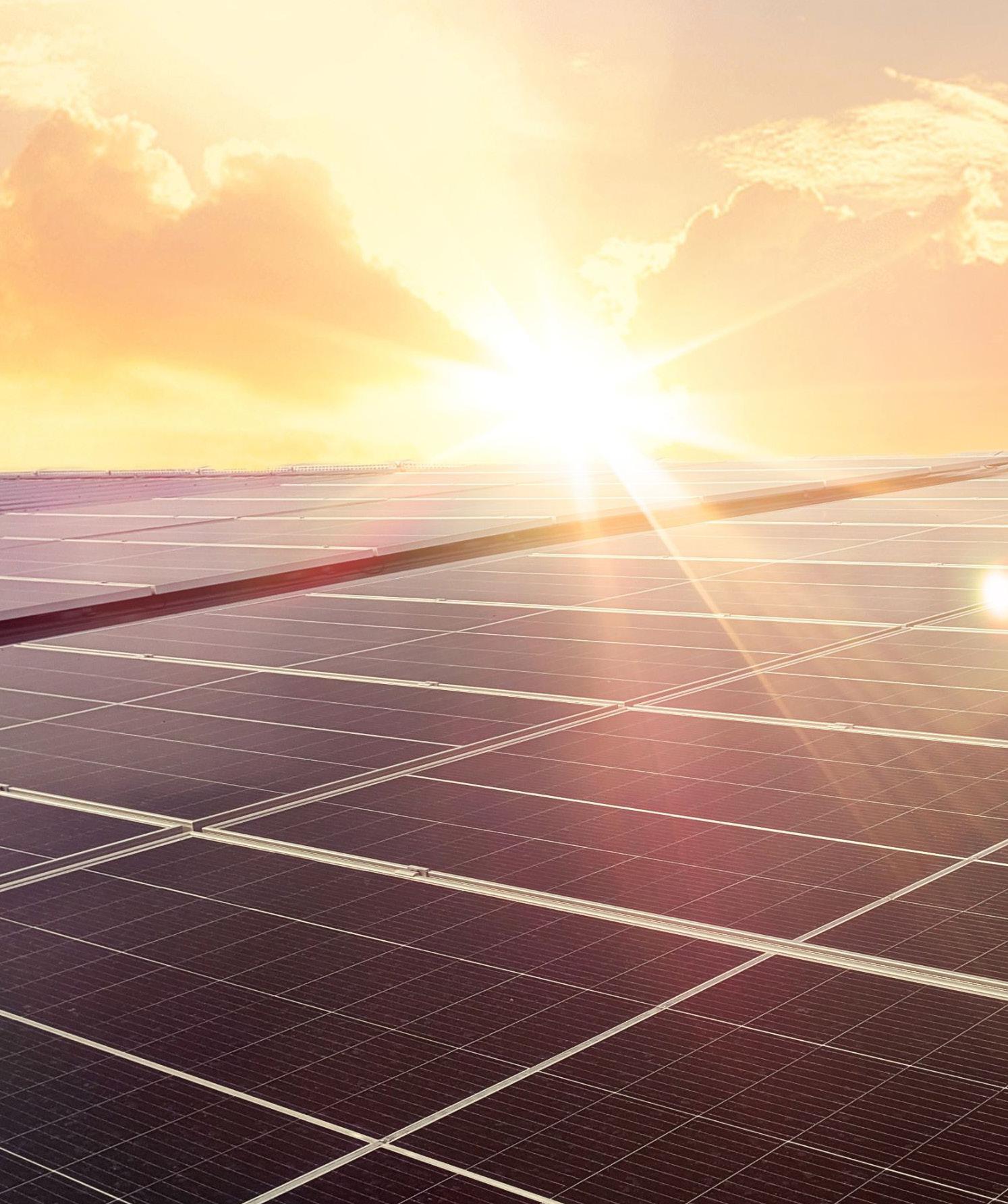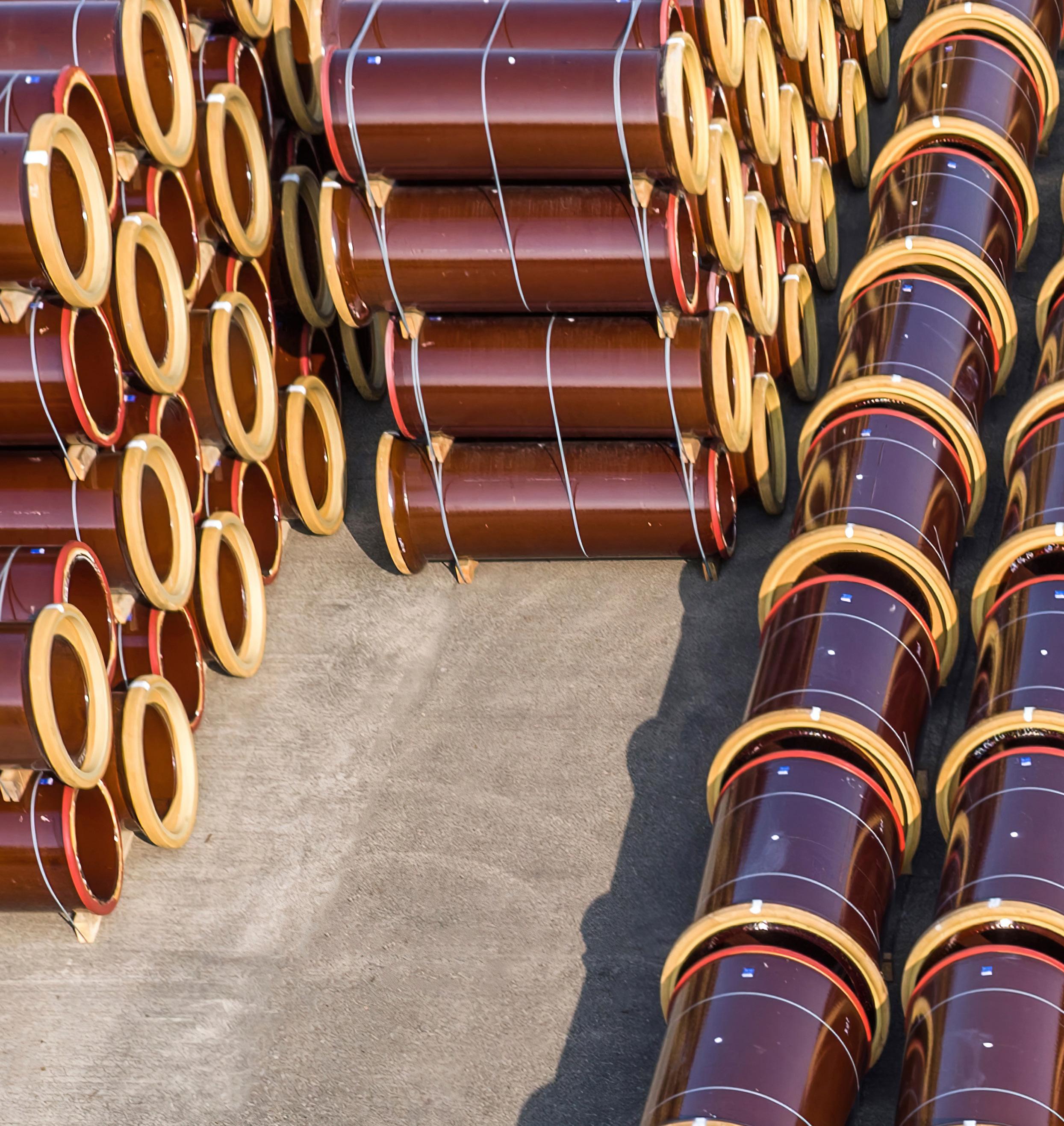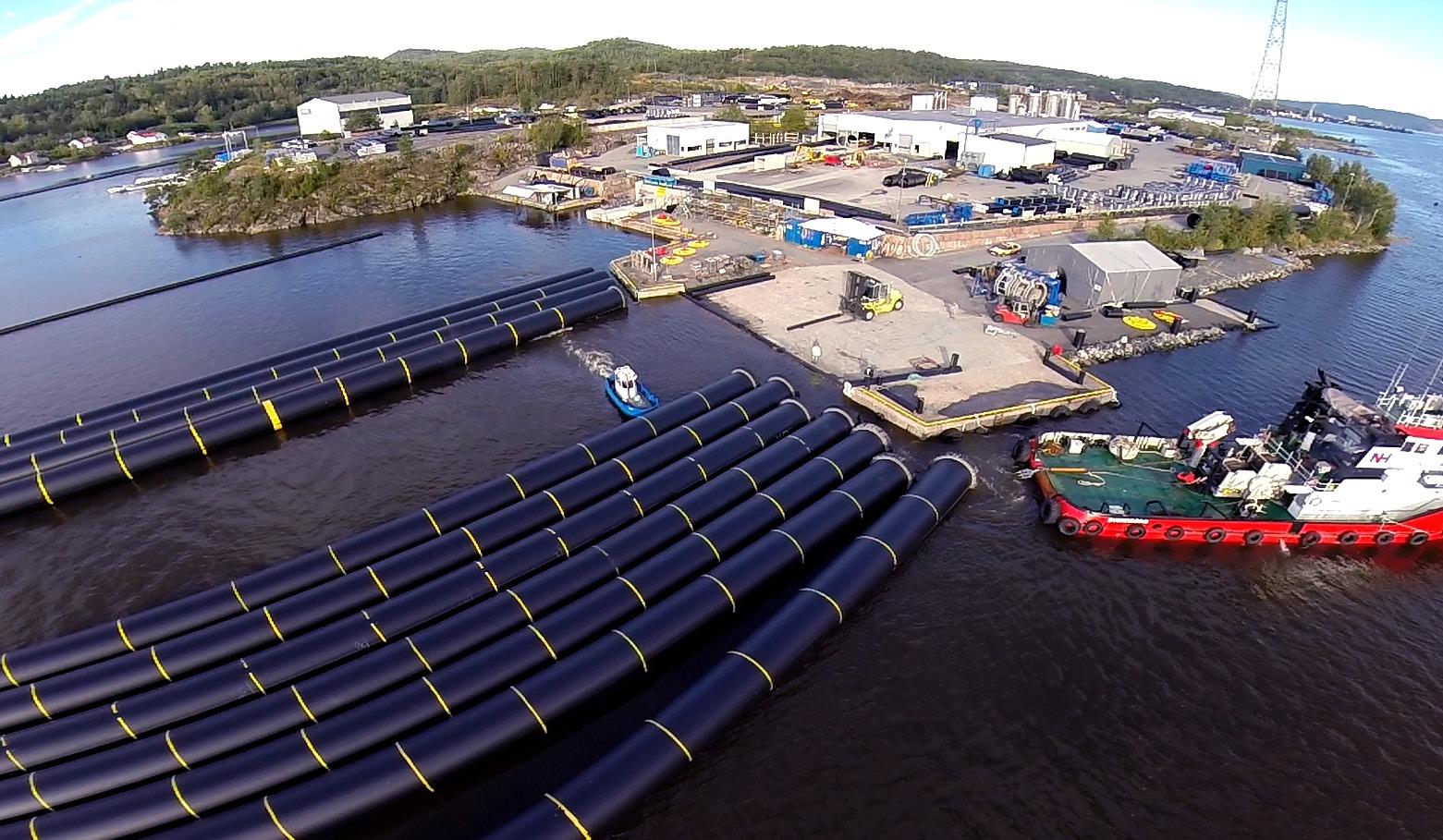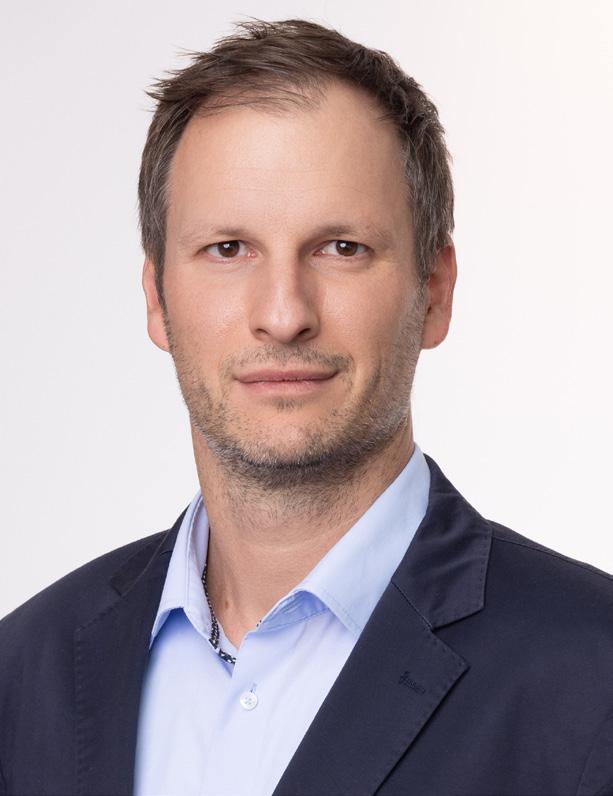




As Head of Group Procurement – Energy at wienerberger, Lukas Pataky plays a pivotal role in shaping the energy future of one of Europe’s leading construction material manufacturers. With operations spanning 28 countries, Pataky has been instrumental in centralising wienerberger’s energy procurement strategy, integrating renewable sources, and driving innovation across liberalised and

Image copyright: Steinzeug-Keramo
regulated markets. In this in-depth interview, he shares insights into balancing risk and resilience, fostering supplier collaboration, and embracing digital transformation to meet ambitious ESG and decarbonisation goals. From green gas to AI-driven contract management, Pataky outlines how wienerberger is preparing to lead in a rapidly evolving energy landscape.

Can you share your professional journey and the experiences that led you to your current role managing energy procurement across wienerberger’s extensive European and global operations?
I first encountered the energy sector in 2010 after completing my MA. I joined a small consultancy focused on energy procurement for large multinational companies. Initially, I learned a bit of everything: how energy markets operate, how to check invoices, and how to prepare budgets. While not every task was enjoyable, as a young professional I seized every opportunity to learn. The young team in Budapest was incredibly supportive.
After two years, I was invited to join the sourcing team for new markets, where I worked on implementing advanced supply contracts across developing EU markets. As I progressed, I moved into client management, interacting with professionals similar to those I now work alongside. This gave me a strong understanding of energy management from the corporate buyer’s perspective and inspired me to transition from consultancy into a direct role—where I could make a greater impact and influence key decisions.
At one point, I set my sights on becoming a corporate category manager. Thanks to my experience and language skills, I landed the role at wienerberger. Initially, I knew little about the company and was surprised by the importance of energy within its operations. I began by overseeing one business unit and a few countries. Over the years, more markets were centralized under my remit, and I eventually integrated energy management across the entire group. With the rise of ESG, green energy procurement has become a vital and strategic part of my role.
You developed wienerberger’s energy procurement policy approved across 28 countries. What were the key factors in creating a unified policy, and how does this ensure reliable and costeffective energy supply?
Centralisation is key to effective energy management. Energy markets are interconnected; for instance, the gas market operates on a global scale. While electricity markets still have local specifics, their major drivers are increasingly global in the long term. Effective price management decisions require deep market understanding and intelligence, making the creation of a central point of expertise a natural solution. Additionally, energy is a significant cost driver for the company. Proximity to top management at the C-level is essential for timely information exchange in this business.
Moreover, energy management is closely linked with R&D. Our group is proud to have a robust technical department, where regular interactions with the energy department are crucial. These interactions help us understand the future of energy in terms of pricing and availability—not just for current carriers but also for new ones. This synergy between departments ensures we are always at the forefront of technological advancements and market trends, allowing us to make informed decisions that benefit the entire organisation.
However, our policy also strongly relies on local support for contract management from a technical perspective. Regular interactions with suppliers are vital to ensure we stay informed and agile in our approach. This dual focus on central expertise and local support allows us to navigate the complexities of the energy market effectively and efficiently. By combining centralised strategic oversight with localised operational execution, we ensure a reliable and cost-effective energy supply that meets the needs of our diverse operations.


Given your expertise in sourcing energy from liberalised and regulated markets, what specific challenges and opportunities do you encounter, and how do you navigate them to benefit wienerberger?
In fully regulated markets, where prices are set by the state, we act primarily as price takers with limited ability to influence outcomes. However, such markets are rare. More commonly, we operate in partially regulated environments characterised by limited supplier choices or underdeveloped infrastructure—often monopolistic in nature. In these scenarios, we present all available deregulated market options to suppliers and negotiate terms that align with our requirements.
Despite local non-standard practices, suppliers in these markets generally understand global sourcing principles, and we often succeed in agreeing on contractual flexibilities. This approach enables us to fulfill our policy objectives of price security and inflation mitigation, keeping us consistently one step ahead.
In standardised, deregulated markets, contracts tend to be more straightforward. Here, we apply a targeted price-fixation methodology based on both technical and fundamental analysis, which benefits the group significantly. There are several key opportunities in these markets. First, breaking down cost components and evaluating suppliers’ risk premiums relative to market risks—such as country spreads or risk tolerances—is essential. This analysis helps us determine whether to manage these risks internally or transfer them to the supplier.
Second, additional value can be unlocked through close cooperation with suppliers on supply and demand dynamics. Suppliers place high value on visibility into offtake volumes and flexibility in demand response. This is a current strategic focus for us, and we are developing contracts that incentivise timely information sharing and operational adaptability. By leveraging these opportunities, we secure a reliable and cost-effective energy supply that aligns with our long-term strategic goals.

What steps are you taking to integrate renewable sources such as biogas, hydrogen, and green electricity into wienerberger’s energy portfolio to achieve your ambitious decarbonisation goals?
To successfully integrate renewable energy sources such as biogas, hydrogen, and green electricity into our company’s energy portfolio, we follow a structured, multi-step approach that ensures both strategic alignment and practical feasibility. First, we begin with a thorough market analysis to understand the evolving landscape of renewable carriers. This includes evaluating the expected capacity, local availability, and cost structures of biogas, hydrogen, and green electricity. My role is to bring this market intelligence into the internal target-setting process, ensuring that our decarbonisation goals are grounded in realistic opportunities.
Access to high-quality information is key. We actively participate in leading industry platforms and training programs to stay ahead of developments. For example, as a member of the European Biogas Association, wienerberger benefits from regular insights into the dynamic biomethane market. To stay current on green electricity, participation in major sector events such as the Resource platform is essential. We are also involved in initiatives focused on hydrogen and other renewable carriers, where supplier engagement and technical training enhance our decision-making capabilities.
Once this foundational knowledge is established, we assess the technical readiness of our facilities. This includes evaluating the adaptation requirements of our current installations to support new energy carriers. We work closely with technical and financial departments to conduct cost-benefit analyses and define clear KPIs to guide implementation and monitor performance. Financing is a critical consideration. Based on the technical and economic assessments, we identify the most suitable financing models that align with both our sustainability objectives and financial strategies.
Lastly, to ensure transparency and accountability, we have updated our internal reporting systems to accurately capture the impact of renewable integration. I’m pleased that the company has recognised the strategic importance of these updates and has supported the necessary changes. These improvements enable us to track progress, measure outcomes, and continuously optimise our decarbonisation strategy.
How do you approach managing risks and negotiating contracts for critical energy resources like natural gas, electricity, and LPG across diverse European and global markets?
Managing risks and negotiating contracts for critical energy resources such as natural gas and electricity requires a structured and strategic approach. It begins with a clear understanding of how each contract can help us meet our operational and sustainability targets. We start by defining the contract objectives, identifying potential suppliers, and presenting our expectations. During negotiations, we apply tactical communication—sharing priorities selectively to maintain leverage while aiming for optimal outcomes.
Risk management is twofold: supplier risk and price risk. To mitigate supplier risk, we assess how much exposure we can allocate to individual suppliers while maintaining a balanced portfolio to avoid monopolistic dependencies. For price risk, we rely on a combination of technical chart analysis and a deep understanding of market fundamentals, always considering broader economic indicators like inflation. Long-term price fixation strategies are developed accordingly.
Collaboration with external experts reinforces decision-making and ensures robust risk governance through a multi-layered, “four-eyes” principle.
How does wienerberger foster innovation and quality through strategic relationships with energy suppliers, particularly in rapidly evolving energy markets?
At wienerberger, we recognise that information is the most valuable asset in the procurement process. We actively participate in energy forums and conduct ongoing research across trusted platforms to stay ahead of trends and identify innovative solutions in the rapidly evolving energy landscape.
Strategic supplier relationships play a central role in fostering innovation and maintaining quality. New and emerging suppliers are often highly motivated to introduce innovative energy solutions, but may lack the institutional infrastructure or present financial risks that must be carefully evaluated. Conversely, our long-term, financially stable partners provide reliability in conventional energy procurement but can be slower to implement new technologies due to more rigid corporate decisionmaking processes.
To balance both innovation and security, we leverage our broad supplier base. This diversity allows us to match the right innovation with the right partner, depending on the project’s nature and scale. When the right stakeholders are engaged, obstacles to implementation can be effectively overcome.
A key focus area is enhancing the flexibility of our renewable energy installations—an initiative that has attracted strong interest from both traditional and emerging suppliers. Their collaboration helps us accelerate innovation while ensuring quality and strategic alignment in our energy transition.
How does your procurement strategy specifically support wienerberger’s broader ESG commitments, particularly regarding sustainability and carbon footprint reduction?
Our procurement strategy is closely aligned with wienerberger’s ESG commitments, particularly in driving sustainability and reducing our carbon footprint. Green energy procurement is fully embedded into our team’s core processes. We are responsible not only for securing energy supply but also for ensuring that it directly contributes to our renewable energy targets and CO2 reduction goals.
To support this, we actively engage with energy suppliers and producers, building strong relationships that provide early insights into market developments. This helps us stay informed about emerging technologies and evolving regulatory frameworks—such as EU-wide renewable energy labelling, cross-border biomethane transfers, and upcoming hydrogen support schemes.
With this knowledge, we target the most suitable and forward-looking energy solutions that support our long-term sustainability objectives. Our structured procurement sequence prioritises transparency, traceability, and cost control. At the same time, we’ve implemented robust reporting tools that ensure progress is measurable and aligned with both internal and external ESG reporting requirements.
By combining deep market intelligence, strategic supplier engagement, and clear procedural frameworks, our procurement strategy plays a pivotal role in meeting the company’s climate goals while balancing financial and operational performance.

Image copyright: Pipelife Norway
Can you discuss the role of digital tools and communication platforms you’ve implemented at wienerberger to streamline energy management and engage internal stakeholders effectively?
Digital tools are central to our energy management strategy and stakeholder engagement. Over time, we have explored and assessed a wide range of external energy management systems, gaining valuable insights into their strengths and limitations. Rather than fully relying on these external platforms, we chose to integrate the best practices and functionalities observed into a customised inhouse solution that fits our specific operational and ESG requirements.
Leveraging our existing SAP infrastructure, we established a cross-functional team—including procurement, IT, controlling, and business intelligence—to develop a centralised energy management tool. This platform consolidates price data, consumption figures, and procurement activities into a single, streamlined database. It supports not only procurement decisions but also corporate reporting, controlling, and sustainability planning.
The development of this tool is a major step forward in ensuring transparency, efficiency, and adaptability across the organisation. At the same time, we maintain strong communication practices through regular workshops and interdepartmental meetings to keep stakeholders aligned and engaged. These sessions allow us to share insights, adapt quickly, and ensure that the digital platform continues to evolve in line with business needs.
This approach empowers us with tailored functionality while maximising internal know-how and minimising dependency on fragmented external systems.
You’ve built and led high-performing procurement teams. How do you cultivate talent and ensure your teams remain innovative and responsive to the dynamic energy landscape?
Building a high-performing procurement team starts with selecting the right people. I’ve learned that while technical energy expertise is valuable, it’s not always essential at the hiring stage. What matters most is the individual’s drive, curiosity, and ability to contribute diverse perspectives to the team. Some of my top performers came from entirely different industries and had their first exposure to energy markets when they joined wienerberger—but their motivation and adaptability made the difference.
Equally important is team dynamics. I consider how a new hire will integrate and enhance collaboration within the team from day one. Once onboard, continuous learning is key. I encourage team members to seek knowledge, experiment with new ideas, and take ownership of developing practical processes that improve our commodity management approach.
To stay ahead in the rapidly changing energy landscape, we break down silos and stay outwardlooking. I strongly support participation in credible energy events, seminars hosted by energy associations, market analysts, and suppliers. We also leverage platforms like LinkedIn for real-time updates and professional insights. Even informal channels—such as WhatsApp groups of energy professionals—prove invaluable for timely information. We stay informed, agile, and ready to adapt.
Looking ahead, what are your strategic priorities for wienerberger’s energy procurement, particularly in terms of energy independence, innovation, and sustainability, over the next five years?
In the coming years, our strategic focus will center on enhancing energy independence, driving innovation, and meeting ambitious sustainability targets. The topic of energy autarchy gained urgency following the Russian aggression against Ukraine. In response, we partnered with engineering teams to develop a data-driven cockpit to evaluate renewable energy deployment across our sites. While earlier challenges like price cannibalisation made some projects unviable, the rapid advancement in battery storage has reshaped the outlook. Combining on-site renewable generation with smart battery systems is now a key priority, and my team is working on scalable deployment models across the group.
Innovation also plays a critical role. We see strong potential for AI to support energy procurement— particularly in contract management, risk analysis, and decision-making processes. These technologies will significantly enhance how we navigate volatile energy markets.
From a sustainability perspective, we are closely aligned with EU climate goals for 2030 and 2050. While the renewable electricity market in Europe is well-established, green gas is now emerging as a focus area. Biomethane, in particular, is advancing faster than hydrogen and is becoming further important element of our procurement strategy. As legislation evolves and prices stabilize, we expect local green gas and electricity sourcing to become an important addition for decarbonisation.
wienerberger is one of the leading providers of innovative, ecological solutions for the entire building envelope, in the fields of new build and renovation, as well as infrastructure in water and energy management. With over 200 production sites across 28 countries, the company specialises in sustainable products such as bricks, roof tiles, pavers, and pipe systems. As the world’s largest producer of clay blocks and Europe’s top manufacturer of facing bricks and clay roof tiles, wienerberger is committed to innovation and ecological responsibility, enhancing energy-efficient and climate-friendly construction worldwide. Additionally, the company is the leading provider of pipe systems and surface pavings in Europe.
